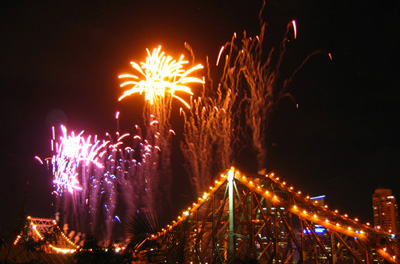Day 6: Aichi World Expo 2005
When we were planning for this trip, my Dad stumbled across the mention of the World Expo in Aichi in Japan in the Reader’s Digest, which just so happened to open during the time that we were there. He wanted to go, so we worked it into our last day in Japan. Getting to the Expo required catching a bullet train (or shinkansen) out of Tokyo. For those that haven’t heard of it, it’s a train that can reach up to 300km/hour and so is excellent for long distance travel. This year’s expo’s theme was based on “Nature’s Theme” and so was showcasing a number of technologies and promoting messages on the importance of maintaining our environment. The Robot Station exhibit was pretty impressive showcasing a number of robots used throughout the Expo site including both cleaning and security ones. There were also a number of other ones including Papero, a child-minding robot used for interactive teaching and learning combining advanced visual, touch and voice recognition technologies.
Like the Expo we had in ’88, this one also meant a lot of standing in line to get to see many exhibitions. The largest line was for the Toyota Showcase which showed us their latest robot technology and other concept cars. Not only did we line up for two hours to get a reservation ticket for the event, but we also then lined up another hour to get in! It was a pretty interesting day all up, with so many new exhibitions and halls making for a good walk around. I even managed to get to go to the Australia pavilion which actually had a pretty impressive showcase to give it. Our mascot for Expo was a female platypus which certainly made for some very sellable merchandise. I think it was a crime though selling Foster’s beer in our food area, and then charging 900 Yen (almost AU$11) for a Crownie!
Trip Summary
Japan’s an awesome place, steeped in amazing technology and a very traditional culture. Although a number of Western influences can be seen, Japan still seems capable of continuing to sustain and grow its own unique culture. Here are just some of the things that I found were different or funny:
- The influence of the French (who were the first to trade with the Japanese when they opened up to the rest of the world) can still be found today. The French word Prefecture is used to describe regions, and there are a numerous little bakeries serving croissants, sweet and savoury breads on every little corner. The French emphasis on presentation and quality can also be found in all aspects of daily life including food, gifts and clothing.
- Technology is everywhere, including in your toilet stalls. It was hilarious to find that some toilet seats were electrically heated, and usually had a control panel performing a wide range of functions such as fake flushing noises, or nature noises as you went about your business.
- Japan is immensely clean despite the seeming lack of rubbish bins on the streets. When you do manage to find them (be sure to carry around your own rubbish), you will find that the Japanese are accustomed to recycling and there are distinct bins for paper, plastics and cans.
- Vending machines abound all over the place, containing items you would normally expect such as a food, drink and cigarettes, but can dispense pretty much anything, even clothing.
- Politeness is engrained in the Japanese culture in all aspects such as all the welcoming shouts and thank-you’s when you walk in or out of stores. I thought it was funny that by the end of my trip, I found myself bowing constantly.
- Trains and subways definitely get packed especially during peak hour. There seems to be a certain art mastered by those that ride on these constantly of being able to stand in the isle without holding onto anything, and then others that somehow manage to sleep while standing up holding onto a single strap. This is certainly the country who has mastered the art of the power-nap.
Visiting Japan is definitely like visiting another world and something I will need to put back on my agenda in the near future! Sugoi Desu Ne!
 For the usual readers, you might have noticed I tend to avoid mentioning employers because my blog entries are solely of my own opinions, and any associations or agreements are purely coincidental. Today is a little bit different (in that I will mention my employer) because this is my first anniversary with my current employer,
For the usual readers, you might have noticed I tend to avoid mentioning employers because my blog entries are solely of my own opinions, and any associations or agreements are purely coincidental. Today is a little bit different (in that I will mention my employer) because this is my first anniversary with my current employer,